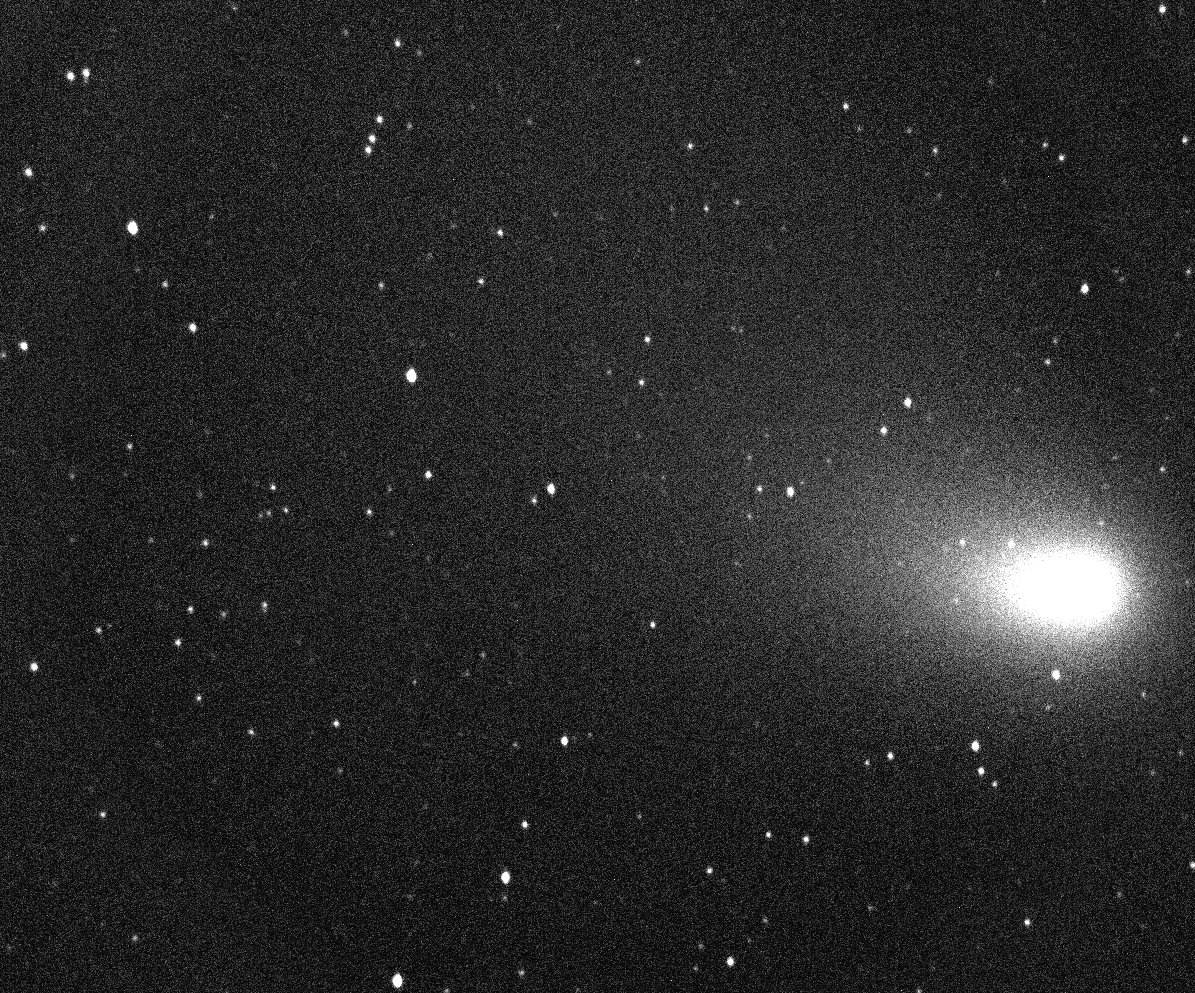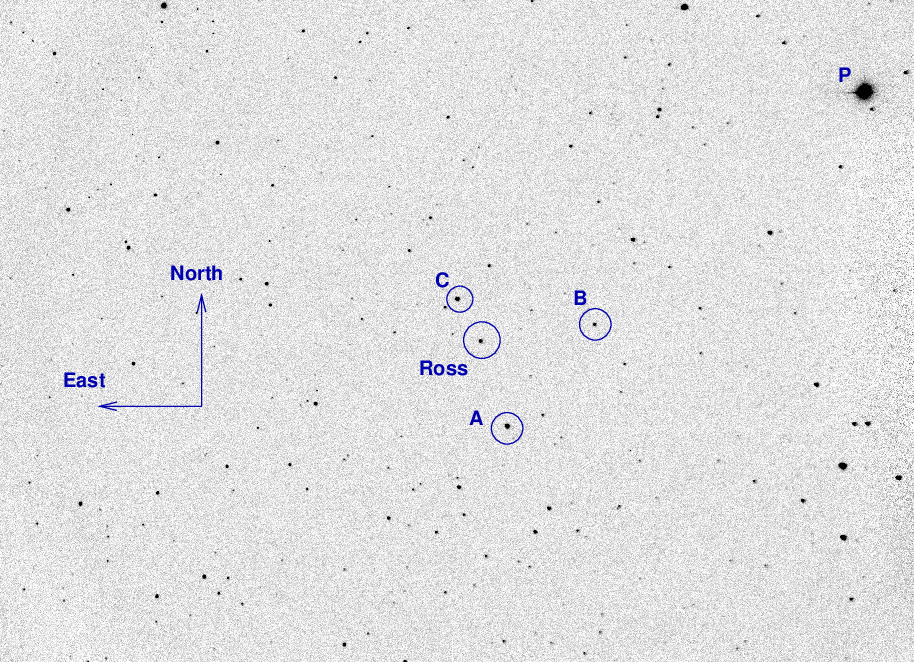
On the night of Feb 08/09, 2023, under medicore conditions, I acquired images of
The astrometric measurements were made using the new system:
The pictures of the comet were also taken through an R-band filter.
This is one of the stars that a capstone student may study over the next year in a project involving parallax. Ross 248 is a relatively faint red star surrounded by many other stars of similar brightness, so it's a good candidate for high-precision parallax measurements.
These observations involved:
Notes from the night:
The object is (currently) near position
RA = 23:41:55.27 Dec = +44:10:06.38 (J2000)
A chart of the field is shown below. The size of the chart is about 41 x 27 arcminutes. The noisy area at right (West) is the shadow of the guider's pickoff mirror.

I've marked the location of several comparison stars.
star UCAC4 B V r ------------------------------------------------------------------------- A UCAC4 671-120730 12.617 10.689 B UCAC4 671-120688 C UCAC4 671-120749 10.987 10.663 P kappa And 4.06 4.14 --------------------------------------------------------------------------
I took a photo of the finder TV's screen when pointing to Ross 248; this could be a useful reference for the future:

In order to get the best results for Ross 248, it is necessary to use only a subset of the stars in the camera's full field of view. For this evening's data, I chose the "largeish" subset, and restricted matches to those stars within about 11 arcminutes of the target.
Here are the positions I've measured so far. The most recent measurements are at bottom right.
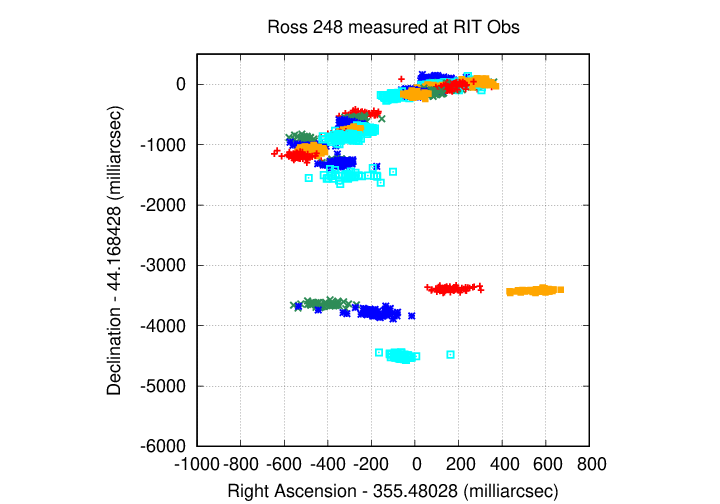
Like Ross 248, GX And is a nearby (binary) star which will be the target of a parallax project in the coming year. One of the two components is bright -- about mag V = 8 -- so one must use short exposures to prevent it from saturating the detector. That may mean that this system isn't as easy to measure as Ross 248 or some others.
On this night, for GX And,
The object is currently close to this position:
RA = 00:18:28.4 Dec = +44:01:31 (J2000)
but it does have a very high proper motion.
A chart of the field is shown below. The size of the chart is about 41 x 27 arcminutes. The noisy area at right (West) is the shadow of the guider's pickoff mirror.
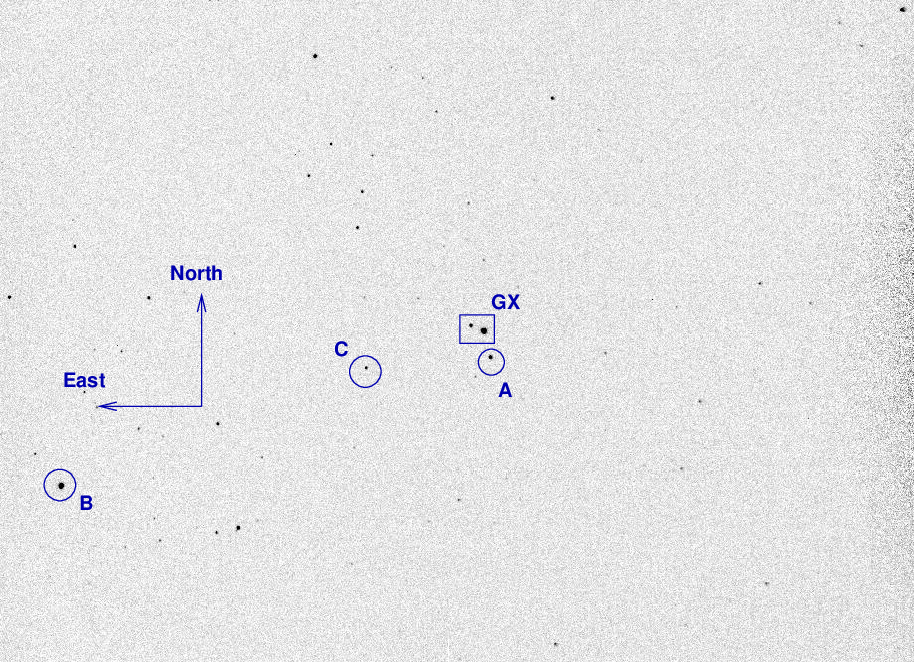
The two components of the GX And binary sit inside the box. I've marked the location of several comparison stars as well.
star UCAC4 B V r ----------------------------------------------------------- A 671-001473 9.939 9.790 B 670-001639 9.413 8.472 C 671-001509 12.712 11.421 11.001 -----------------------------------------------------------
I took a photo of the finder TV's screen when pointing to GX And; this could be a useful reference for the future:
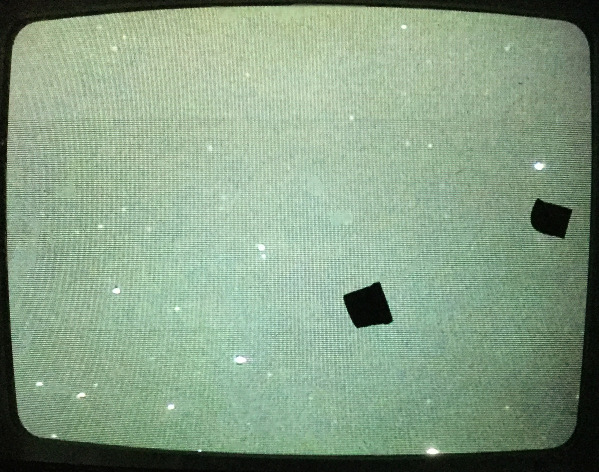
Using the same techniques as described for earlier nights, I matched detected stellar positions to the Gaia DR2 catalog, using all the stars in the "intermed" reference set.
The target is moving to the upper-right with time, and clearly shows the back-and-forth motion due to parallax.

This comet has been passing relatively close to the Earth over the past few weeks. On this night, it was only 0.37 AU from the Earth and 1.20 AU from the Sun.
The comet moved too much between images to allow any simple co-addition of images, so the image below is just one of the individual 30-second exposures. Each image is about 19.5 x 16 arcminutes in size; North is up, East to the left. At this moment, the comet was located at
RA = 04:53:29.6 Dec = +32:53:18With low contrast, one can see just the inner coma ...

... while a high-contrast display shows the outer coma and hints of a tail to the northeast (upper left).
